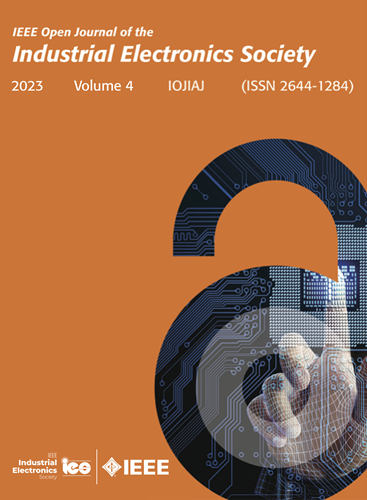永磁同步电机驱动的低停滞无模型预测电流控制
IF 7.2
1区 工程技术
Q1 AUTOMATION & CONTROL SYSTEMS
引用次数: 0
摘要
随着更新频率的降低,停滞效应对基于信号梯度的无模型预测控制(MFPC)的精度提出了挑战。为了从采样数据的角度解决这一问题,本文提出了一种低滞点无模型预测电流控制(MF-PCC)策略,并将其应用于永磁同步电机(PMSM)驱动中。考虑到采样数据中的某些元素不能准确描述系统的运动特性和运行状态,改进了一种双二阶广义积分器(FC-DSOGI)结构,利用该结构提取这些元素并通过随机增益重新注入,从而产生强制差分以减少停滞效应。利用模糊逻辑来确定控制律的最优增益,从而提高控制性能。选择广义通用模型(GUM)作为例子。通过实验验证,所提出的方法的有效性得到了证明,增强了当前质量和模型精度,同时增强了鲁棒性。此外,它还展示了低滞差控制策略相对于传统控制策略的优越性。本文章由计算机程序翻译,如有差异,请以英文原文为准。
Low-Stagnation Model-Free Predictive Current Control of PMSM Drives
As the updating frequency decreases, the stagnation effect poses a challenge to the accuracy of model-free predictive control (MFPC) based on signal gradients. To mitigate this issue from the perspective of sampled data, a low-stagnation model-free predictive current control (MF-PCC) strategy is proposed in this article and applied in permanent magnet synchronous motor (PMSM) drives. Recognizing that some elements of the sampled data do not contribute to accurately depict the motion characteristics and operational states of the system, a frequency-converting double second-order generalized integrator (FC-DSOGI) structure is improved and utilized to extract these elements and reinject them by a random gain, thereby generating a coercive difference to reduce the stagnation effect. Furthermore, fuzzy logic is developed to determine the optimal gains for the control law, thereby enhancing the control performance. The generalized universal model (GUM) is chosen as an illustrative case. Through experimental validation, the effectiveness of the proposed method is demonstrated with enhancements in current quality and model accuracy, alongside enhanced robustness. Moreover, it showcases the superiority of the low-stagnation over conventional control strategies.
求助全文
通过发布文献求助,成功后即可免费获取论文全文。
去求助
来源期刊

IEEE Transactions on Industrial Electronics
工程技术-工程:电子与电气
CiteScore
16.80
自引率
9.10%
发文量
1396
审稿时长
6.3 months
期刊介绍:
Journal Name: IEEE Transactions on Industrial Electronics
Publication Frequency: Monthly
Scope:
The scope of IEEE Transactions on Industrial Electronics encompasses the following areas:
Applications of electronics, controls, and communications in industrial and manufacturing systems and processes.
Power electronics and drive control techniques.
System control and signal processing.
Fault detection and diagnosis.
Power systems.
Instrumentation, measurement, and testing.
Modeling and simulation.
Motion control.
Robotics.
Sensors and actuators.
Implementation of neural networks, fuzzy logic, and artificial intelligence in industrial systems.
Factory automation.
Communication and computer networks.
 求助内容:
求助内容: 应助结果提醒方式:
应助结果提醒方式:


